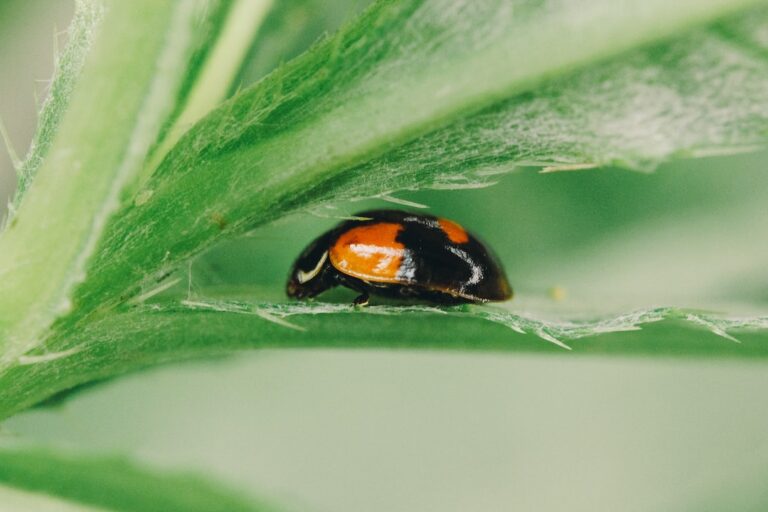Turtle Behavior: Do Turtles Fight to the Death?
Turtles are fascinating creatures with unique social dynamics and behaviors. While they may occasionally engage in fights, it is rare for turtles to fight to the death. Understanding their social habits, aggression signals, and environmental factors can shed light on turtle behavior and help pet owners create a harmonious environment for their turtles.
Table of Contents
Key Takeaways:
- Turtles may display aggression, but fights to the death are rare.
- Understanding turtle social dynamics and territorial behavior is crucial.
- Recognizing the difference between playful interaction and true aggression is important.
- Environment plays a significant role in shaping turtle behavior.
- Creating a peaceful habitat and providing enrichment can minimize aggression.
Understanding Turtle Social Dynamics
Turtles are fascinating creatures that are known for their unique social behaviors. Understanding turtle social dynamics can provide valuable insights into their behavior and interactions. In this section, we will explore the role of territoriality in turtle behavior, distinguish between playful interaction and true aggression, and discuss the impact of the environment on their social habits.
The Role of Territoriality in Turtle Behavior
Territoriality is a significant aspect of turtle social dynamics. Many turtle species exhibit territorial behavior, where they establish and defend specific areas as their own. This behavior helps turtles secure resources, such as food, mates, and basking spots, within their territories.
By defining their territories, turtles can avoid unnecessary conflicts and competition. Territorial disputes between turtles usually involve displays of aggression, such as pushing, biting, and shell ramming. Understanding the signals and behaviors associated with territoriality is essential for turtle owners to manage their pets’ social interactions effectively.
Distinguishing Between Playful Interaction and True Aggression
Turtle owners often wonder how to differentiate between playful interaction and true aggression. Playful interactions among turtles are characterized by gentle nudges, chasing, and shell bumping. These interactions generally involve no harm and are a natural part of turtle socialization.
On the other hand, true aggression in turtles is more intense and often involves aggressive postures, prolonged biting, and persistent chasing. Aggressive behaviors can lead to injuries and stress in turtles, so it is crucial to monitor their interactions closely and intervene appropriately when needed.
Impact of Environment on Social Habits
The environment plays a significant role in shaping the social habits of turtles. Factors such as tank size, temperature, hiding places, and the presence of other tank mates can influence their behavior and social dynamics.
Turtles require ample space to establish their territories and engage in natural behaviors. Insufficient space can lead to increased aggression and stress among turtles. Providing hiding places and basking spots within the tank can also help reduce conflicts and promote a more harmonious environment.
Comparing Turtle Social Behaviors
| Social Behavior | Definition | Examples |
|---|---|---|
| Territorial Behavior | Turtles establish and defend specific areas as their own. | Aggressive displays, marking territory, defending resources |
| Playful Interaction | Turtles engage in gentle interactions as a part of socialization. | Nudging, chasing, shell bumping |
| True Aggression | Turtles engage in intense and harmful behaviors. | Aggressive postures, biting, persistent chasing |
Understanding turtle social dynamics, the role of territoriality, distinguishing between playful interaction and true aggression, and considering the impact of the environment on social habits are essential aspects of turtle care. By creating a suitable environment and managing their interactions, turtle owners can promote healthier social dynamics and ensure the well-being of their pets.
Signs of Aggression in Aquatic Turtles
Aquatic turtles have their own unique ways of expressing aggression. Understanding the signs of aggression can help turtle owners identify and address potential issues. Here, we will explore the various behaviors that indicate aggression in turtles, including aggressive postures, biting behavior, and chasing behavior.
Recognizing Aggressive Postures and Movements
Turtles may display certain postures and movements when they are feeling aggressive. These behaviors can serve as warning signs to other turtles or indicate a territorial dispute. Some common aggressive postures and movements to look out for include:
- Head and neck extended
- Flared front legs
- Lowered and rigid body
- Hissing or hissing-like noises
- Head-bobbing
Interpreting Biting and Chasing Behaviors
In addition to aggressive postures, turtles may engage in biting and chasing behaviors when they are feeling aggressive. These actions can be directed towards other turtles, objects, or even humans. Biting can be a display of dominance or an attempt to defend territory, while chasing often occurs during territorial disputes. It’s important to note that aggressive behaviors can vary among turtle species and individuals.
When interpreting biting and chasing behaviors, it is crucial to consider the context and the frequency of these actions. If the aggression seems excessive or becomes a persistent issue, it may be necessary to intervene and prevent further conflict.
| Behavior | Description |
|---|---|
| Biting | Turtle opens its mouth and attempts to bite or snap |
| Chasing | Turtle pursues another turtle or object in a persistent manner |
Understanding the signs of aggression in aquatic turtles can help turtle owners create a peaceful environment for their pets and prevent potential conflicts. By recognizing aggressive postures, interpreting biting and chasing behaviors, and taking appropriate actions, turtle owners can ensure the well-being and harmony of their aquatic companions.
Factors Contributing to Turtle Fights

Several factors can contribute to turtle fights, including limited resources and overcrowding in tanks. Understanding these factors is essential for maintaining a peaceful and harmonious environment for pet turtles.
The Influence of Limited Resources
Turtles, like any other animals, rely on essential resources for survival and well-being. Limited access to resources such as food and basking spots can lead to competition and aggression among turtles. When resources are scarce, turtles may become territorial and engage in fights to protect their access to these resources.
Providing an adequate and balanced diet for turtles can help mitigate aggression caused by limited food resources. Ensuring that each turtle has enough food to meet its nutritional needs significantly reduces the likelihood of fights over food.
Implications of Overcrowding in Tanks
Overcrowding in turtle tanks can also contribute to aggressive behavior. When turtles are kept in small and confined spaces, they may experience higher levels of stress and competition for resources. Inadequate space can lead to heightened aggression and territoriality.
Creating a suitable and spacious living environment for turtles is essential for preventing fights caused by overcrowding. Providing enough swimming space, basking spots, and hiding places can reduce stress and minimize territorial conflicts. It is recommended to consider the size and spatial requirements of each turtle species when designing their habitat.
Image: Illustration of an overcrowded tank highlighting the issue of limited space in turtle habitats.
Turtle Mating Rituals or Battlegrounds?
When it comes to turtle mating, what may appear as a serene and gentle process is often filled with intense battles and competition among males. Understanding the dynamics of male competition during mating season and assessing the risk of injury during mating behaviors provides valuable insights into turtle behavior.
Understanding Male Competition During Mating Season
Male turtles engage in fierce competition during mating season as they vie for the attention and favor of females. This competition can involve aggressive behaviors such as ramming, flipping, and biting, as males strive to establish dominance and secure their chances of mating. The intensity of this competition can be influenced by factors such as the availability of mates, territory, and resources.
Assessing the Risk of Injury During Mating Behaviors
Turtle mating rituals pose a significant risk of injury due to the aggressive nature of male competition. Males may sustain wounds and injuries from bites and scratches inflicted by their rivals. These injuries range from minor abrasions to more severe wounds that can cause infections and other medical complications. Assessing the risk of injury during mating behaviors is crucial for the well-being and health of the turtles involved.
| Mating Behavior | Risk of Injury |
|---|---|
| Aggressive Ramming | High risk of shell and body injuries |
| Biting and Scratching | Potential for deep wounds and infections |
| Flipping and Overturning | Risk of shell damage and physical trauma |
Understanding the potential risks associated with turtle mating rituals allows turtle owners and enthusiasts to take preventive measures to ensure the safety and well-being of their turtles. Providing adequate space, separating aggressive individuals, and seeking veterinary care for injuries are essential steps in minimizing the risk of harm.
Common Misconceptions About Turtle Behavior
When it comes to turtle behavior, there are several misconceptions that often surface, particularly regarding aggression. These misconceptions can lead to misunderstandings and misinformation. In this section, we will debunk some of the common myths surrounding turtle aggression and separate fact from fiction in turtle interactions.
Debunking Myths Surrounding Turtle Aggression
One of the most prevalent misconceptions is that turtles are inherently aggressive animals. While it is true that turtles can display aggressive behaviors, such as biting or chasing, these behaviors are typically situational and not indicative of their overall temperament. Aggression in turtles is often a response to perceived threat, territorial disputes, or competition for resources.
Another misconception is that all turtle species exhibit the same level of aggression. In reality, the level of aggression can vary significantly between species. For example, some turtle species, like snapping turtles, are known for their aggressive tendencies, while others, like box turtles, are generally more docile.
It is also important to note that aggression in turtles can be influenced by environmental factors. Factors such as inadequate tank size, lack of hiding places, or poor water quality can lead to stress and increased aggression in turtles. By providing a suitable and enriching environment for turtles, aggression can be minimized.
Separating Fact from Fiction in Turtle Interactions
It is essential to differentiate between aggressive behavior and normal turtle interactions. Turtles may engage in behaviors that may appear aggressive, such as headbutting or jostling, but these interactions are often harmless and part of their natural social dynamics.
Understanding turtle body language and communication signals is crucial in interpreting their behavior accurately. For example, turtles may exhibit head bobbing or hissing as a form of communication rather than aggression. By familiarizing ourselves with these behaviors, we can better comprehend turtle interactions.
In conclusion, it is important to debunk misconceptions surrounding turtle behavior, particularly aggression. By dispelling these myths and understanding the reality of turtle interactions, we can promote a better understanding of turtle behavior and create harmonious environments for these fascinating creatures.
Creating a Peaceful Habitat for Turtles
Turtles thrive in an environment that promotes their well-being and minimizes stress and conflict. By designing a turtle habitat that meets their natural instincts and needs, you can provide them with a peaceful and harmonious living space. Here are some key factors to consider:
Designing an Environment to Minimize Stress and Conflict
To create a peaceful turtle habitat, it is important to design the environment in a way that minimizes stress and potential conflicts. Consider the following:
- Space: Provide ample space for each turtle, ensuring they have enough room to establish their territories and minimize territorial disputes.
- Water Quality: Maintain clean and well-filtered water to ensure the turtles’ health and reduce the risk of stress-related illnesses.
- Basking Areas: Include multiple basking spots with appropriate heat sources to avoid competition for the preferred basking spots.
- Separation: If you have multiple turtles, consider creating separate areas within the habitat to prevent constant interaction and potential conflicts.
The Importance of Providing Enrichment and Hiding Places
Turtles, like many other animals, benefit from enrichment activities and hiding places that mimic their natural habitat. This helps reduce stress and encourages natural behaviors. Consider the following:
- Substrate: Use a substrate that allows turtles to dig and burrow, providing them with a sense of security and enrichment.
- Vegetation: Include live or artificial plants that offer hiding places and visual barriers to minimize stress and potential conflicts.
- Shelter: Place caves, logs, or other hiding structures in the habitat to provide turtles with safe retreats when they feel threatened or overwhelmed.
- Food Enrichment: Incorporate interactive feeding devices or scatter food around the habitat to encourage foraging and mental stimulation.
Creating a peaceful habitat for turtles requires careful consideration of their natural instincts and behaviors. By designing an environment that minimizes stress and conflict while providing enrichment and hiding places, you can ensure a harmonious living space for your turtles.
When Turtles Clash: Prevention and Intervention
Taking preventive measures and implementing intervention strategies can help reduce the likelihood of turtle fights. It is important to create a safe and harmonious environment for your turtles. Additionally, knowing how to safely separate fighting turtles is crucial to ensure their well-being.
Strategies for Reducing the Likelihood of Fights
Preventing turtle fights requires proactive measures to address potential triggers and conflicts. Here are some strategies to reduce the likelihood of fights:
- Provide ample space: Ensure that your turtles have enough space to establish their territories and avoid crowded conditions that may lead to aggression.
- Offer adequate resources: Make sure that each turtle has access to sufficient food, basking spots, and other essential resources to minimize competition.
- Monitor behavior: Regularly observe your turtles’ interactions and look for any signs of aggression or stress. Early detection allows for timely interventions.
- Create hiding places: Provide hiding spots in the tank where turtles can retreat and feel secure when they need a break from social interactions.
- Introduce compatible tankmates: Carefully select tankmates that have compatible behavior and size. Avoid housing aggressive species with more docile turtles.
How to Safely Separate Fighting Turtles
When turtle fights occur, it is essential to intervene promptly and separate the turtles safely. Here are the steps to follow:
- Protect yourself: Wear protective gloves to avoid potential bites or scratches during the separation process.
- Use a barrier: Place a physical barrier such as a tank divider or a transparent plastic sheet to create a temporary separation between the fighting turtles.
- Provide separate tanks: If the fighting persists, it may be necessary to separate the turtles into individual tanks to avoid further conflict.
- Observe and reintroduce: Monitor the behavior of each turtle closely and only reintroduce them when signs of aggression have subsided.
Turtle First Aid: Handling Bites and Injuries
In the event of a turtle fight, it is essential to know how to handle bites and injuries to ensure the well-being of your pet. Turtles have the potential to inflict wounds on each other during aggressive encounters, and prompt action is necessary to prevent further harm and promote healing.
Steps for Treating Wounds After a Turtle Fight
If your turtle has been involved in a fight and has sustained injuries, it is important to follow these steps to provide proper first aid:
- Gently separate the fighting turtles to prevent further injuries.
- Wear disposable gloves to protect yourself from potential bacteria present on the wounded turtle.
- Clean the wound with a mild antiseptic solution to minimize the risk of infection. Use a clean, damp cloth or gauze soaked in the antiseptic solution to gently clean the affected area.
- Apply an appropriate reptile-safe wound ointment or antibiotic cream to promote healing and prevent infection. Follow the product instructions for application.
- Keep the wounded turtle isolated in a clean and comfortable environment to minimize stress and promote recovery.
- Monitor the wound closely for signs of infection, such as redness, swelling, or discharge. If any of these symptoms occur, consult a veterinarian for further treatment.
When to Seek Veterinary Care for Turtle Injuries
While minor wounds can often be treated at home, there are situations where seeking veterinary care is necessary. Consider the following scenarios:
- Deep wounds or severe bleeding that cannot be controlled with basic first aid measures.
- Signs of infection, such as increased redness, swelling, discharge, or foul odor.
- Visible bone or internal organs.
- Lethargy, loss of appetite, or other concerning changes in behavior.
It is crucial to consult a reptile veterinarian with experience in treating turtle injuries to ensure proper diagnosis and treatment. They can provide expert guidance and prescribe appropriate medication or procedures to aid in the healing process.
Do Turtles Fight to the Death?

While it is rare for turtles to engage in fights that result in death, serious injuries can occur during these bouts. Understanding the nature of turtle fights provides valuable insights into their behavior and highlights the potential risks involved.
Turtles, like many other animals, have natural instincts that may sometimes lead to aggressive encounters. However, fatal turtle fights are uncommon, as turtles typically have mechanisms to defend themselves and escape from potentially deadly situations.
During fights, turtles may exhibit various aggressive behaviors, such as biting, lunging, and shell ramming. These confrontations can be intense, especially between male turtles during mating season when they compete for mates.
It is crucial for turtle owners to recognize the signs of aggression and intervene if necessary to prevent serious injuries. Providing enough space, proper resources, and a peaceful environment can help minimize the likelihood of fights and promote a harmonious coexistence among turtles.
While fatal turtle fights are rare, it is important to create a safe and secure habitat for pet turtles to prevent any potential harm. By understanding turtle behavior and taking appropriate measures to manage aggression, turtle owners can ensure the well-being of their beloved pets.
Diet and Nutrition: Can Feeding Strategies Reduce Aggression?
The diet and nutrition of turtles can greatly influence their behavior. By implementing proper feeding strategies, turtle owners can help reduce aggression and promote a peaceful environment for their pets. Feeding schedules and dietary variety play a crucial role in maintaining the overall well-being of turtles and can positively impact their behavior and social interactions.
Proper Feeding Schedules to Maintain Peace
Establishing a regular and consistent feeding schedule is essential in promoting peaceful turtle behavior. Turtles thrive on routine, so providing them with predictable meal times helps reduce stress and potential aggression. By feeding turtles at the same time each day, they become more relaxed and less likely to engage in territorial disputes or fighting.
The Role of Dietary Variety in Turtle Behavior
Turtles, like many animals, require a diverse and balanced diet to support their health and behavior. Offering a variety of food items not only ensures they receive the necessary nutrients but also stimulates their natural foraging instincts. Providing a mix of commercial turtle pellets, fresh vegetables, fruits, and occasional live or frozen prey can prevent boredom, enhance their overall well-being, and reduce aggression.
By tailoring feeding strategies to meet their specific nutritional needs and maintaining a consistent feeding schedule, turtle owners can effectively contribute to a peaceful and harmonious environment for their beloved pets.
Conclusion
Understanding turtle behavior is essential for promoting peaceful interactions among these fascinating creatures. By considering the social dynamics of turtles, providing a suitable environment, and addressing aggression, turtle owners can create a harmonious living space for their pets.
Through the exploration of territoriality and recognizing the difference between playful interaction and true aggression, we gain insights into the complex social habits of turtles. Additionally, understanding the impact of the environment on their behavior helps ensure their well-being.
It is important to debunk common misconceptions surrounding turtle aggression and separate fact from fiction in turtle interactions. By creating a peaceful habitat that minimizes stress and conflict, while providing enrichment and hiding places, turtle owners can ensure a serene and contented environment for their pets.
Promoting peaceful turtle interactions requires preventive measures, intervention strategies, and the ability to safely separate fighting turtles when necessary. In the event of a turtle fight, proper first aid for handling bites and injuries is crucial. Additionally, understanding when to seek veterinary care for turtle injuries ensures that their health is not compromised.
In conclusion, understanding turtle behavior and promoting peaceful interactions are vital for the well-being of these captivating creatures. By applying the knowledge gained from studying their social dynamics, addressing aggression, and creating a suitable environment, turtle owners can cultivate a harmonious existence for their beloved pets.
FAQ
Do turtles fight to the death?
While turtles can engage in fights and display aggressive behavior, it is rare for them to fight to the death.
What is the role of territoriality in turtle behavior?
Territoriality plays a significant role in turtle behavior, often leading to territorial fights between turtles.
How can I distinguish between playful interaction and true aggression in turtles?
Recognizing aggressive postures, movements, and biting or chasing behaviors can help differentiate between playful interaction and true aggression in turtles.
How does the environment impact turtle social habits?
The environment, including limited resources like food and basking spots, as well as overcrowding in tanks, can contribute to aggression and affect turtle social habits.
What are the signs of aggression in aquatic turtles?
Signs of aggression in aquatic turtles may include aggressive postures, movements, biting, and chasing behaviors.
What factors contribute to turtle fights?
Limited resources such as food and basking spots, as well as overcrowding in tanks, can contribute to turtle fights and aggression.
Do turtle mating rituals involve intense battles between males?
Turtle mating rituals can sometimes appear as intense battles between males as they compete for a female mate.
What are some common misconceptions about turtle behavior?
Common misconceptions about turtle behavior often involve misunderstandings about aggression and social interactions among turtles.
How can I create a peaceful habitat for my turtles?
Designing an environment that minimizes stress and conflict, providing enrichment and hiding places, can help create a peaceful habitat for turtles.
How can I prevent and intervene in turtle fights?
Strategies for reducing the likelihood of fights, and knowing how to safely separate fighting turtles, can help prevent and intervene in turtle fights.
How should I handle bites and injuries after a turtle fight?
Taking steps to treat wounds and knowing when to seek veterinary care for turtle injuries is important after a turtle fight.
Do turtles ever fight to the death?
While rare, serious injuries can occur during turtle fights. However, it is not common for turtles to fight to the death.
Can feeding strategies reduce aggression in turtles?
Implementing proper feeding schedules and providing dietary variety can help maintain peaceful turtle behavior and reduce aggression.







